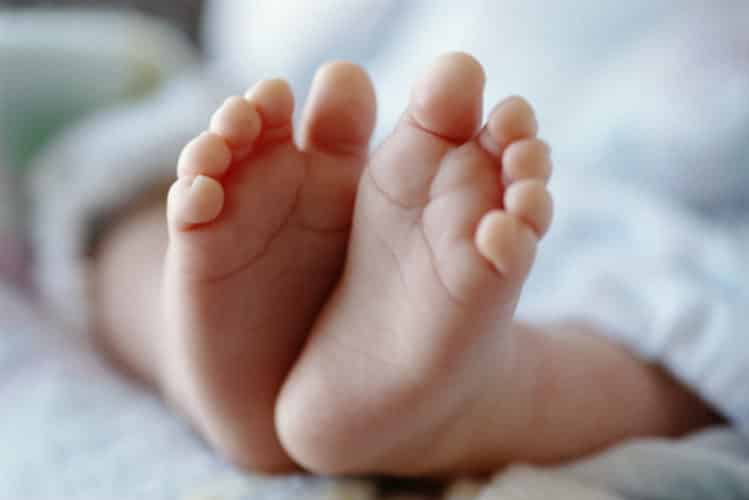To learn about the specifics of SIDS, read the start of the article, Sudden Infant Death Syndrome (SIDS).
Afin de connaître les particularités du syndrome SMSN, voir le début du billet : Le syndrome de la mort subite du nourrisson (SMSN)
While the exact cause of SIDS is unknown, research continues. We still don’t know if we will be able to identify a single cause of this syndrome. But we have found that some illnesses can have an impact on the baby and cause SIDS. These include meningitis, encephalitis or other congenital or metabolic afflictions that were no caught at birth. Additionally, some clues can also explain why SIDS occurs, such as:
1. The Way the Baby Sleeps

Some SIDS cases can be caused by the baby’s position, laying on their side or stomach, head downwards. The Canadian Pediatrics Society, the Canada Foundation for the Study of Infant Mortality, the Canadian Institute of Infant Health and Health Canada recommend that all infants in good health sleep on their back. Parents should place their child on their stomach several times a day when awake, keeping an eye on them. The stomach position can prevent “flat head” (plagiocephaly) and counterbalance the muscle development effects of sleeping on their back.
Certains cas de SMSN pourraient être causés par la position du bébé, couché sur le côté ou sur le ventre, la tête vers le bas. La Société canadienne de pédiatrie, la Fondation canadienne pour l’étude de la mortalité infantile, l’Institut canadien de la santé infantile et Santé Canada recommandent
2. Poor Temperature Control
Some infants have difficulty controlling their body temperature. In the past, most SIDS cases occurred in the winder, perhaps because the babies were excessively covered and risked a significant rise in body temperature. We now have data that shows that there is no longer a seasonal difference in the number of deaths. However, excessive heating is still considered a risk factor.
3. Central Nervous System (or Genetic) Anomalies
Babies who die from SIDS may have seemed in perfect health. But there may have been an unidentified anomaly in their central nervous systems (brain, nerves or spine). For example, some children can have parts of their central nervous systems that are underdeveloped (premature, immature systems).
Researchers support that some babies may be more vulnerable to SIDS as they may be carrying a specific gene. Research is ongoing to understand the phenomenon better. Based on the latest data, some scientists state they have identified a brain stem anomaly in babies that have died in SIDS-like conditions compared to healthy babies. This region of the brain controls breathing and the baby’s head and neck movements. This makes them believe that this structural difference is possibly the cause of SIDS, but tests for screening have not been developed yet.
4. Defective Breathing Control
Affected babies may have defects in their breathing control or respiratory capacity. Research has shown that some babies may have marginal respiratory anomalies resulting from late development of the parts of the nervous system that control breathing.
5. Exposure to Second-Hand Smoke
Exposure to second-hand smoke is a risk factor for newborns (even during pregnancy) and infants. This was identified as one of the more severe risks for SIDS. The higher the exposure, the higher the risk.
L’exposition à la fumée est un facteur de risque pour les bébés à naître,
To learn about factors associated with SIDS, read Sudden Infant Death Syndrome Risk Factors.
Pour connaître les facteurs reliés au SMSN, consultez Les facteurs de risque à la mort subite du nourrisson.


